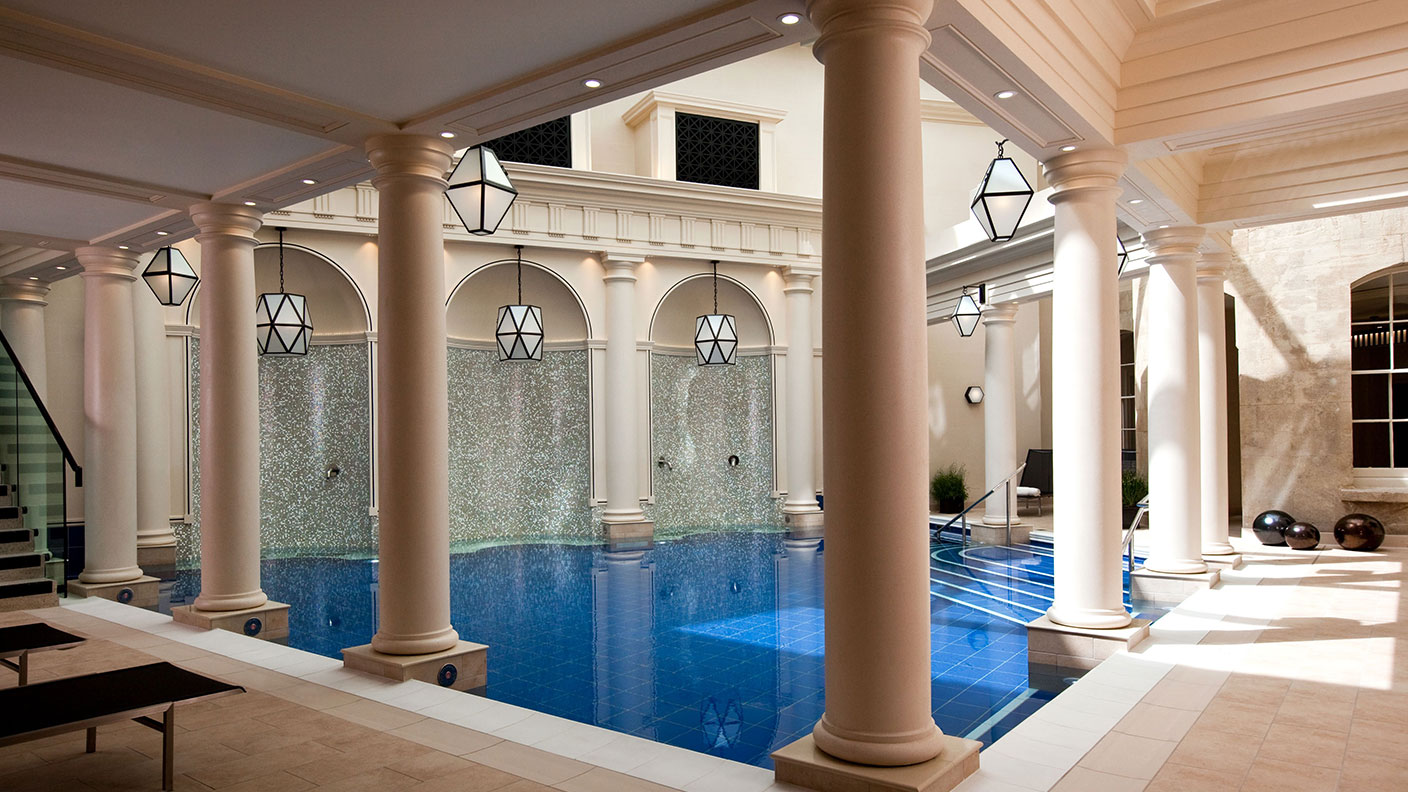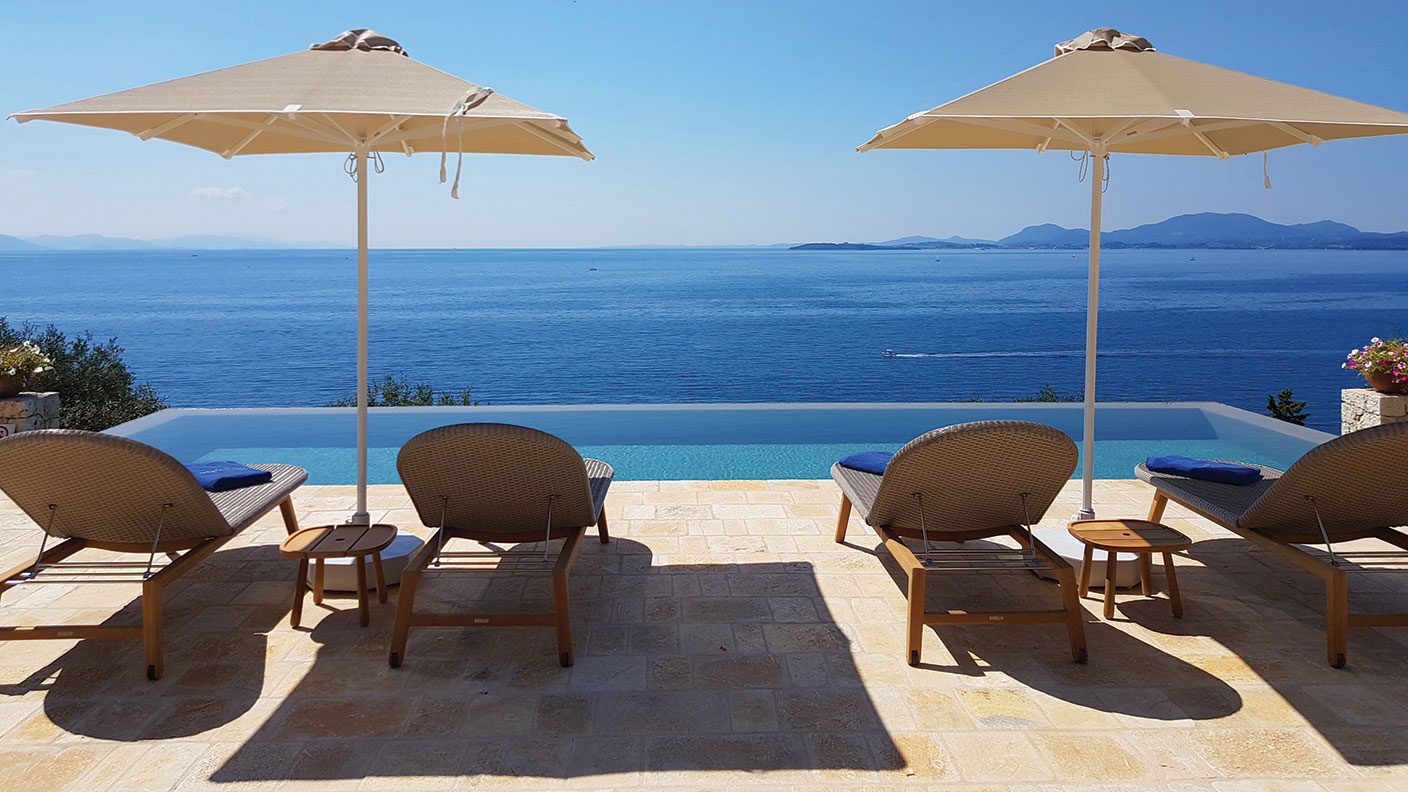Revive your weary spirits in a spa
When the current crisis has passed, we’ll need to take the waters. Chris Carter recommends a spa in Bath.


When in Bath, do as the Romans did – bathe. People have been coming “to take the waters” for centuries – long before the Romans made Aquae Sulis, as they called Bath, fashionable. Some came to relax, others to be “cured” of their ailments. These days you can’t actually go in the water at the world-heritage Roman Baths (which, by the way, are definitely worth a visit if you’ve never been). The water is pond-green and none too inviting. Happily, The Gainsborough Bath Spa hotel draws the water for its Spa Village Bath from the same springs. It is the only one to do this – and trust me, this water you do want to get into.
Sitting under one of the pressure spouts in the main pool, the warm water pummelling your shoulders, its all too easy to slip into a trance. While you’re at it, you might as well contemplate where all this water comes from. Surprisingly, the source is still a mystery. It’s thought the water fell as rain 10,000 years ago. It seeped into the earth to a depth of two kilometres to be warmed and returned to the surface in the form of three springs. One of these is Hetling Spring and it provides the three thermal pools with mineral-rich water. There are also two saunas, one of which is infrared, and a steam room. There’s also the “ice alcove” for hardcore spa-goers. Whether out of survival instinct or just raw cowardice, I found myself slinging the ice over my shoulder. I think one piece might have touched me.
My 90-minute Magnesium Remineraliser treatment was much easier to get onboard with. I hadn’t realised that I needed to be “remineralised” – my focus being more on animal and vegetable (read on – that came later). But magnesium is apparently responsible for “promoting energy levels, sleep, circulation, metabolism and muscle movement”. I can vouch for the sleep part. The scrub, massage and warm wrap is terribly relaxing. Muscle movement? I think I did turn over once. As for metabolism, I defy anybody to come up with a better way of preparing for dinner than with a good massage… followed by a cocktail in the bar, naturally, with The Gainsborough’s convivial general manager, Marc MacCloskey. He explained to me the history of the building.
MoneyWeek
Subscribe to MoneyWeek today and get your first six magazine issues absolutely FREE

Sign up to Money Morning
Don't miss the latest investment and personal finances news, market analysis, plus money-saving tips with our free twice-daily newsletter
Don't miss the latest investment and personal finances news, market analysis, plus money-saving tips with our free twice-daily newsletter
Salus per aquam

The Gainsborough opened five years ago. As you may have guessed, it’s named after Thomas Gainsborough, who lived in Bath from 1759. But the artist was never actually resident at the site, which was just as well as the two buildings that make up the present-day hotel were former hospitals. The current buildings, with their Georgian and Victorian façades, date from 1826 and 1860, but the Hospital of Thomas Bellott, which served the sick and needy, had occupied the site since 1609. “Do not leave dormant in your store that would relieve the poor. If the poor sleep soundly, so will you,” reads the Latin inscription etched in stone. That The Gainsborough today occupies former hospitals is somewhat fitting for a hotel that is built around a spa, albeit a luxury one. And you won’t have any trouble sleeping soundly in the cosy bedrooms. Ours was a corner room with views of the Abbey and the rooftop pool at the modern Thermae Bath Spa next door.
But to dinner! If The Gainsborough is named after an artist, then so is its restaurant – Dan Moon. The only difference is West Country native Dan Moon is alive and to be found in the kitchen, using local ingredients to whip up works worthy of his three AA rosettes for our seven-course tasting menu. The smoked rabbit with ethical “foie gras”, Parma ham and tomato was served beneath a teeny, tiny glass cloche that, when lifted, unleashed a puff of smoke. All of the dishes from the cream of mushroom velouté to the chocolate marquise were excellent, while the roast duck in a plum sauce, served with a homemade spring roll, was my particular favourite. Each dish was paired with a different wine.
These waters will be empty for some weeks to come – but everyone’s going to need a long stint in the pool when this crisis ends, and this is the place to look forward to visiting. Salus per aquam, as those Romans might have said – “health through water”. Or simply, “Spa”.
Chris was a guest of The Gainsborough. From £290 on a room-only basis, see thegainsboroughbathspa.co.uk
Get the latest financial news, insights and expert analysis from our award-winning MoneyWeek team, to help you understand what really matters when it comes to your finances.

-
 ‘Why I have ditched my Help to Buy ISA for cash savings and the stock market’
‘Why I have ditched my Help to Buy ISA for cash savings and the stock market’Without the 25% bonus, my Help to Buy ISA is effectively redundant, says MoneyWeek writer Sam Walker.
-
 Is your inheritance tax allowance cut if you sell to downsize or sell your home to pay for care?
Is your inheritance tax allowance cut if you sell to downsize or sell your home to pay for care?Downsizing relief is a little-known benefit that could save your loved ones tens of thousands of pounds in inheritance tax after you’ve died.
-
 Should you invest in rum?
Should you invest in rum?Analysis Old rum could be worth thousands of pounds. Is it worth auctioning off?
-
 10 cheapest countries to visit
10 cheapest countries to visitTravel We look at the cheapest countries to visit where your money will stretch the furthest without compromising on quality
-
 Best cards for travel abroad
Best cards for travel abroadAdvice Whether you’re going on holiday or you go abroad regularly, we weigh up the best cards for travel.
-
 A South African adventure
A South African adventureReviews From buzzy Johannesburg to big game drives, South Africa has it all, says Katie Monk
-
 Villa Gaia Rock: perfect harmony in Corfu
Villa Gaia Rock: perfect harmony in CorfuReviews Blend in with your surroundings at the new Villa Gaia Rock in Corfu.
-
 Holiday reading: five books to make sense of the 1970s – and the 2020s
Holiday reading: five books to make sense of the 1970s – and the 2020sReviews With raging inflation, booms, busts and political crises, the 1970s has a reputation as a relentlessly awful decade. But things aren’t that simple, says Merryn Somerset Webb. Here, she picks five books to put it all in context.
-
 Indulge your wild side with a safari in deepest Kent
Indulge your wild side with a safari in deepest KentReviews Get up close to the animals at Port Lympne Hotel and Reserve, says Matthew Partridge
-
 Two stunning Sicilian villas
Two stunning Sicilian villasReviews There is so much to see in Sicily, says Chris Carter. Villa stays allow you to take it all in.